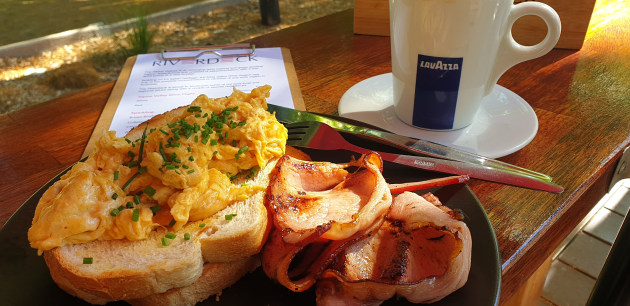Gran Fondos are fun but can be hard work if you don’t have the right fuel in the tank. With that in mind Bicycling Australia has prepared a complete guide to Gran Fondo nutrition! Today we are looking at what to eat before the ride, both on the actual day and beforehand.
Let’s start with a really simple rule: ensure that you start your day with a protein-based breakfast.
In addition to this, it is important to eat at frequent intervals during the day (four to six times depending on your metabolism) to constantly top up your energy stores and reduce stress on your digestive system. Breaking up your meals is even more critical for cyclists who may be consuming up to 350-840g of carbs per day for a 70kg male.
Prepare: Start Your Ride Topped With Energy
Whether you’re doing the Maxi, Challenge or Social Classic you need to ensure that the snack or meal consumed immediately before the ride gives you every opportunity to meet the nutritional goals ahead.
The primary source of fuel is carbohydrates at moderate to intense training intensities. Prior to rides, clever cyclists reach for carbohydrate rich foods in their cupboard to ensure maximal storage of glycogen predominantly in the muscle, but also the liver.

Different carbohydrates affect blood glucose levels (and consequently energy levels) differently. Some research suggests that low GI foods (e.g. whole grains, some fruits and vegetables) are more useful before exercise to provide a more sustained energy release. Foods with a GI range of 55 or less are considered to be low GI (www.glycemicindex.com). You should also opt for foods that are easy to digest, reasonably low in fat, rich in carbohydrates and familiar and enjoyable to consume.
Many elite athletes adopt a carefully planned carbohydrate loading strategy to sustain peak glycogen levels in the body during an event. Even if you’re not cycling at an elite level, there are benefits in adopting this carb loading strategy, particularly for any sessions lasting greater than 90 minutes.
How?
- Consume a high carbohydrate intake for one to four days (7-12g/kg)
- Exercise must be tapered during the loading period
The carb loading strategy may sound easy, but it requires meticulous planning and effort. Stock up on low fibre, easy to digest foods such as honey, tinned fruit, jelly, sports drink, pasta, rice and potatoes.
Note: Females may not reap the full benefits of carb loading particularly during their menstrual cycle. More research is needed in this area… but this doesn’t mean that females can’t benefit from a reasonably high carb diet leading up to a big event. Start small and build up to an optimal level for your individual needs.
Next week: Refueling during the ride!

